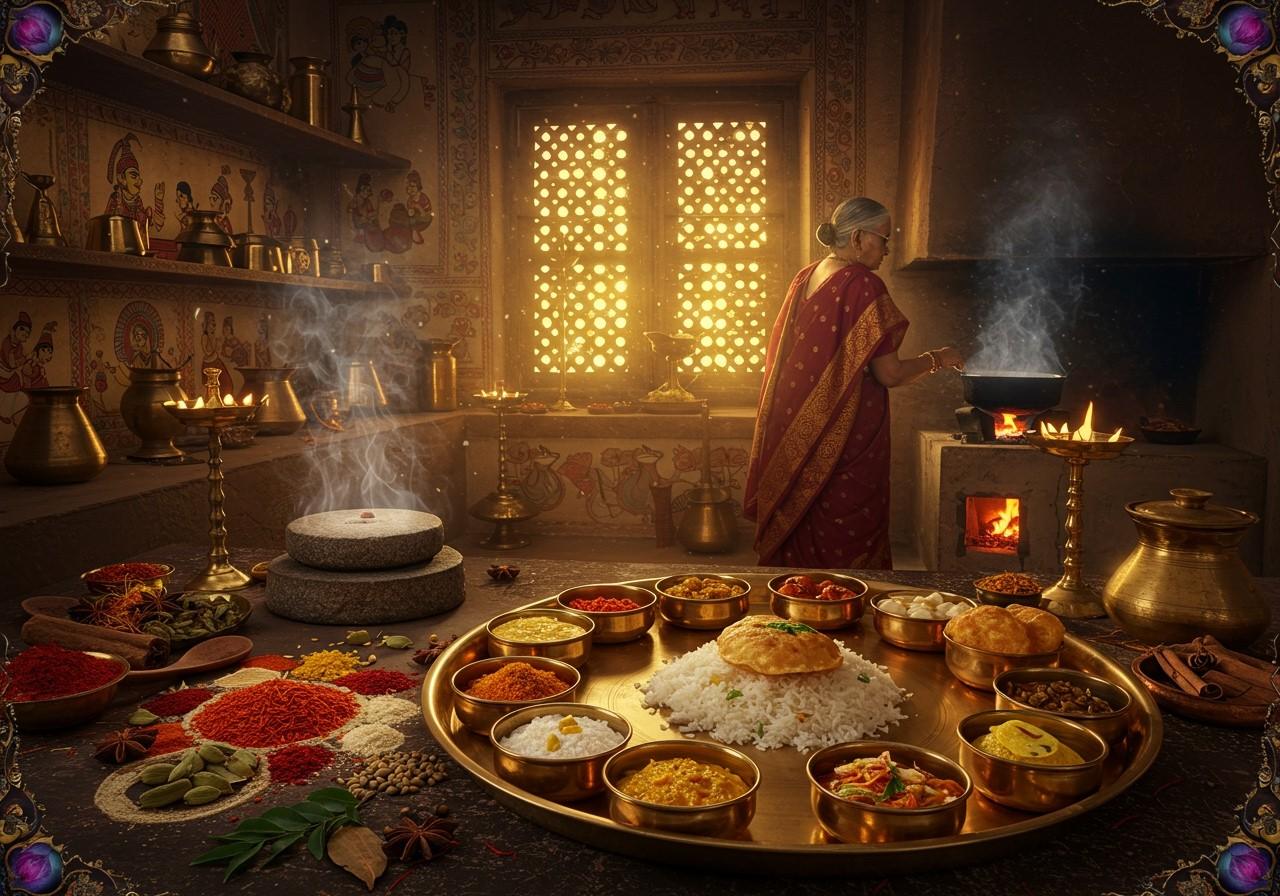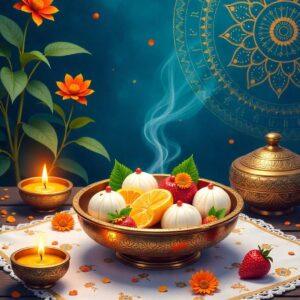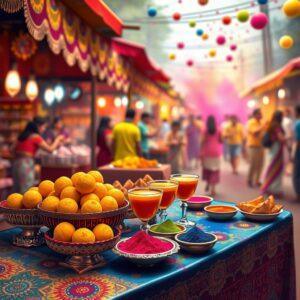
The rich culinary traditions of Panchala, a historical region in Northern India, offer a fascinating glimpse into ancient Indian food practices. This article explores the historical and cultural significance of Panchala cuisine, delving into traditional dishes and culinary customs that have been passed down through generations. Discover how these age-old practices continue to influence contemporary Indian cooking.
Historical Background of Panchala
Panchala, an ancient kingdom mentioned in Indian epics like the Mahabharata, was located in parts of modern-day Uttar Pradesh. It held great cultural and political significance in ancient India. Its fertile land and diverse climate allowed for a variety of crops and ingredients, shaping the unique flavors of Panchala cuisine.
Traditional Dishes of Panchala
Panchala cuisine features many traditional dishes that reflect its agricultural heritage:
- Kachri ki Sabzi: Made from wild cucumbers, this dish highlights the use of local produce, showcasing the resourcefulness of Panchala’s culinary traditions. The unique flavor of kachri adds a distinct taste to this regional specialty.
- Makki ki Roti and Sarson ka Saag: Corn flatbread paired with mustard greens curry showcases seasonal ingredients. This hearty combination represents the agricultural abundance of the region and provides a nutritious and flavorful meal.
- Bajre ki Khichdi: A hearty millet porridge emphasizing ancient grains like bajra. This dish reflects the historical significance of millets in the Panchala diet and offers a glimpse into ancient Indian foodways.
- Chana Dal Kachori: Deep-fried snack stuffed with spiced lentils, perfect for festive occasions. This flavorful snack is a testament to the culinary creativity of the region and is often enjoyed during celebrations and gatherings.
- Gulgule: A sweet treat made from jaggery and wheat flour, symbolizing the simplicity and sweetness of Panchala desserts. This simple yet satisfying sweet is a perfect example of how basic ingredients can be transformed into delightful treats.
Culinary Customs of Panchala
Culinary customs are integral to Panchala cuisine:
- Sattvic Food: Pure, vegetarian food often consumed during religious observances, emphasizing the spiritual connection between food and faith in Panchala. This practice highlights the importance of purity and mindfulness in their culinary traditions.
- Community Cooking: Feasting during festivals and social gatherings strengthens community bonds, creating a sense of unity and shared experience around food. This custom underscores the social significance of food in Panchala culture.
- Earthenware Cooking: Enhances flavor and nutritional value, connecting the cuisine to the earth and its resources. This traditional method of cooking is believed to impart a unique taste and preserve the nutrients in the food.
- Seasonal Eating: Use of fresh, locally sourced ingredients, reflecting a deep respect for nature’s rhythms and the bounty of each season. This practice ensures that the cuisine is always vibrant and flavorful.
- Food Offerings: Spiritual connection through offerings to deities, demonstrating the integration of food into religious practices. This custom highlights the sacredness of food and its role in spiritual life.
- Role of Women: Preserving and passing down culinary traditions, ensuring the continuity of cultural knowledge and practices through generations. This emphasizes the important role women play in maintaining the culinary heritage of Panchala.
Influence of Panchala Cuisine on Modern Indian Cooking
Panchala cuisine has left a lasting impact on modern Indian culinary practices:
- Ancient Grains Resurgence: Millets are making a comeback in modern diets, echoing the historical importance of these grains in regions like Panchala. This resurgence highlights the nutritional value and cultural significance of ancient grains.
- Farm-to-Table Dining: Emphasis on fresh, local ingredients mirrors traditional practices, promoting sustainable agriculture and regional flavors. This trend aligns with the long-standing Panchala tradition of using locally sourced produce.
- Spices and Techniques: Panchala spices and cooking methods are popular in contemporary restaurants, showcasing the enduring appeal of these traditional flavors. This demonstrates how regional culinary traditions can influence mainstream cuisine.
- Home Adaptations: Traditional recipes are being preserved in homes, ensuring that these culinary treasures are passed down through families. This practice helps maintain the cultural heritage of Panchala cuisine.
Cultural Significance
As highlighted in texts like the Vedas and Ayurvedic scriptures, ancient Indian food traditions were deeply interconnected with religion, medicine, and social customs. The diet primarily consisted of grains and pulses, with dishes such as dal (lentils) being central to the cuisine. Ancient Indian culinary practices also included a variety of homemade milk products and the preparation of dishes like rice and vegetables together, as mentioned in the Mahabharata. Ayurveda emphasized a holistic approach to wellness, incorporating food, meditation, and yoga.
The revival of ancient grains such as millet in modern diets and the growing popularity of farm-to-table dining echo traditional practices from regions like Panchala. The use of fresh, locally sourced ingredients continues to inspire contemporary Indian cuisine. The incorporation of traditional spices and cooking methods from Panchala into modern Indian restaurants has preserved these age-old culinary traditions.
Poojn.in’s Role in Preserving Culinary Traditions
Poojn.in, India’s leading online store for cultural and religious goods, offers a wide range of products that can help you embrace and preserve the rich culinary traditions of Panchala and other regions of India. We provide high-quality ingredients, traditional cookware, and puja items essential for maintaining the authenticity of your culinary practices.
- Turmeric: Sourced directly from India, our pure turmeric sticks are perfect for adding authentic flavor and color to your Panchala dishes. Available in various sizes to meet your needs.
- Camphor: An essential ingredient in many traditional Indian ceremonies and culinary practices, our high-quality camphor is perfect for adding a touch of sacredness to your meals and rituals.
- Sustainable Puja Practices: Learn more about incorporating eco-friendly practices into your puja rituals and cooking, aligning with the traditional respect for nature found in Panchala cuisine.
Conclusion
Panchala cuisine is more than just food; it is a celebration of history, culture, and tradition. The ancient recipes and culinary customs of Panchala offer a rich tapestry of flavors and practices that continue to influence modern Indian cooking. By embracing these traditions, we not only preserve our culinary heritage but also honor the wisdom of our ancestors. Let us continue to explore, celebrate, and share the rich culinary heritage of Panchala, ensuring that these traditions thrive for generations to come. By doing so, we support local food producers and keep our cultural legacy alive.


